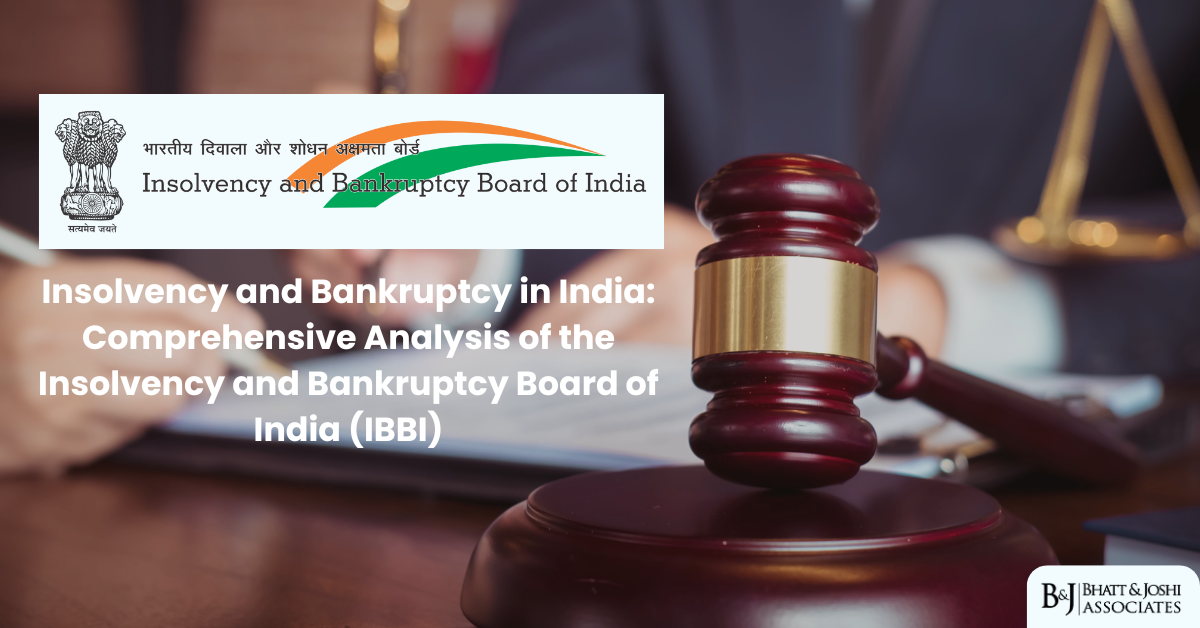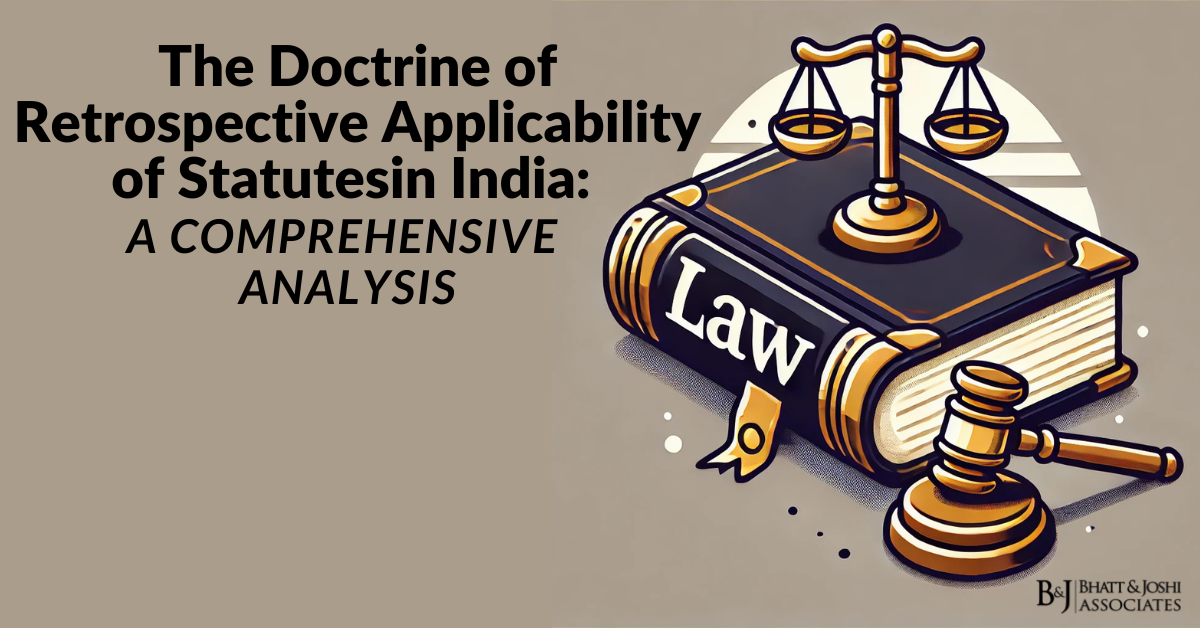Introduction to Insolvency and Bankruptcy in India
Insolvency and bankruptcy have become central issues in India’s corporate and economic landscape, particularly over the last two decades. Historically, India lacked a consolidated mechanism to address insolvency matters, leading to fragmented processes that were inefficient and often subject to delays. The enactment of the Insolvency and Bankruptcy Code (IBC), 2016, fundamentally changed how insolvency and bankruptcy are approached, with the goal of maximizing asset value, offering debt relief, and restructuring businesses in distress. This Code unified the law and processes surrounding insolvency and bankruptcy, creating an efficient, time-bound framework. At the heart of the IBC’s functioning is the Insolvency and Bankruptcy Board of India (IBBI), established as a regulatory body responsible for overseeing, guiding, and enhancing the efficacy of insolvency processes.
This article delves into the multifaceted role of the IBBI in regulating insolvency in India, the legal framework governing it, the distinct procedures within insolvency law, and a selection of landmark judgments that have shaped this field. Additionally, the article examines current challenges and future developments likely to impact the insolvency landscape in India.
Formation and Core Objectives of the Insolvency and Bankruptcy Board of India (IBBI)
The Insolvency and Bankruptcy Board of India (IBBI) was established under the Insolvency and Bankruptcy Code in October 2016, mandated with oversight and regulatory functions that are instrumental in the effective administration of the Code. The IBBI’s responsibilities are extensive and include framing regulations, licensing and monitoring insolvency professionals (IPs), accrediting insolvency professional agencies (IPAs), and ensuring compliance with high standards of conduct and ethics across the insolvency framework.
The primary objective of the IBBI is to oversee and regulate the process of insolvency and bankruptcy in India to ensure it is conducted transparently, professionally, and efficiently. The IBBI’s presence provides a structured approach to insolvency proceedings, protecting creditors’ interests while providing a fair avenue for debtors to seek relief or restructuring. Its regulatory powers encompass every aspect of insolvency, from the corporate insolvency resolution process (CIRP) and individual bankruptcy proceedings to liquidation and cross-border insolvency considerations.
Legal Framework and Core Provisions Governing Insolvency in India
The IBC, 2016, acts as the central legal framework governing insolvency and bankruptcy in India, replacing several fragmented laws. Prior to the IBC, India followed multiple laws like the Sick Industrial Companies Act, 1985, the Recovery of Debts Due to Banks and Financial Institutions Act, 1993, and the Securitisation and Reconstruction of Financial Assets and Enforcement of Security Interest Act, 2002 (SARFAESI). These laws operated independently, resulting in lengthy resolution processes and conflicting orders.
The IBC brought about a unified law that focuses on the timely resolution of insolvency cases, encouraging better recovery rates and creating a more predictable debt recovery process. Under Section 196 of the IBC, the IBBI is vested with the authority to regulate, update, and enforce rules governing various insolvency procedures, including the CIRP, liquidation, voluntary liquidation, and the fast-track resolution process. Moreover, the IBC provides the IBBI with powers to develop regulations for insolvency professional standards, including conduct, ethics, and procedural compliance.
The Corporate Insolvency Resolution Process (CIRP)
The CIRP is one of the cornerstone mechanisms introduced by the IBC for resolving corporate insolvency. It is intended as a fast-track solution that prioritizes the restructuring and revival of financially distressed companies. The process begins with an application from either a creditor or the debtor itself, which is filed before the National Company Law Tribunal (NCLT). If the NCLT finds merit in the application, it admits the case, and a CIRP is initiated.
The CIRP is a time-bound process with strict deadlines: it is to be completed within 180 days, with a one-time extension of 90 days permitted in certain cases. This time-bound nature of the process is crucial as it encourages quicker resolution and better asset recovery. The process involves the formation of the committee of creditors (CoC), which plays a critical role in evaluating and approving the resolution plan proposed by the resolution professional (RP). The CoC’s decisions require at least a 66% majority vote, underscoring the collaborative approach taken within the framework of the IBC.
The IBBI has issued multiple regulations to guide the CIRP, including the Insolvency and Bankruptcy Board of India (Insolvency Resolution Process for Corporate Persons) Regulations, 2016. These regulations set out the procedural aspects of the CIRP, such as deadlines for the submission of claims, the conduct of CoC meetings, and the duties of RPs. In the event that no resolution plan is approved by the CoC, the company moves toward liquidation under the direction of the NCLT.
Landmark Judgments Shaping CIRP and IBBI’s Regulatory Framework
The CIRP has been shaped and refined through various judicial interpretations, which have clarified ambiguities and fortified the IBC framework. In Swiss Ribbons Pvt. Ltd. & Anr. v. Union of India & Ors. (2019), the Supreme Court upheld the constitutionality of the IBC and affirmed its objectives, including a time-bound resolution process. The judgment endorsed the IBBI’s regulatory role and recognized its efforts to create a structured insolvency environment that aligns with global standards.
Another landmark case is Essar Steel India Ltd. v. Satish Kumar Gupta (2019), in which the Supreme Court reinforced the decision-making power of the CoC and clarified that the commercial wisdom of the CoC would have primacy, with limited judicial intervention. This judgment had far-reaching implications for the CIRP, strengthening the role of creditors while emphasizing the IBBI’s regulatory role in maintaining professional standards within the resolution process.
Insolvency Professionals (IPs) and their Role in Insolvency Proceedings
Insolvency professionals (IPs) are licensed experts who play a central role in managing insolvency processes. They act as intermediaries, ensuring compliance with the IBC and overseeing corporate operations during CIRP. The IBBI licenses and regulates these professionals, enforcing standards that promote independence, ethical conduct, and competence.
IPs are responsible for taking control of the debtor’s assets, coordinating with creditors, and developing viable resolution plans. They must operate impartially, upholding the interests of all parties, including debtors, creditors, and other stakeholders. The IBBI’s stringent guidelines and periodic updates ensure that IPs adhere to the highest professional standards. Misconduct or breaches by IPs can lead to disciplinary actions by the IBBI, as seen in M/S Alok Infrastructure Ltd. v. Registrar, IBBI, where disciplinary action was upheld for IPs failing to follow due procedures.
The Role of Insolvency Professional Agencies (IPAs) and Information Utilities (IUs)
Insolvency Professional Agencies (IPAs) and Information Utilities (IUs) also play crucial roles within the IBC framework. IPAs, registered with the IBBI, are responsible for the certification and training of IPs, ensuring that IPs remain competent and act within the bounds of the Code. The major IPAs in India include the Indian Institute of Insolvency Professionals of ICAI, ICSI Institute of Insolvency Professionals, and the Insolvency Professional Agency of the Institute of Cost Accountants of India.
Information Utilities (IUs), on the other hand, are entities responsible for maintaining and authenticating financial information. These utilities provide a single-source reference for debt and default data, ensuring that creditors and other stakeholders can access reliable and verified information. The National E-Governance Services Ltd. (NeSL) is currently the primary IU in India. IUs improve transparency, facilitate data sharing, and reduce ambiguity in insolvency proceedings.
In State Bank of India v. Metenere Ltd. (2020), the National Company Law Appellate Tribunal (NCLAT) ruled that information from an IU is valuable but not mandatory for establishing insolvency. This judgment underscored the role of IUs while granting flexibility to creditors who may use alternative documentation to establish defaults.
Cross-Border Insolvency and the UNCITRAL Model Law
The IBC is still evolving, especially with respect to cross-border insolvency. Although India has yet to adopt a comprehensive cross-border insolvency framework, the IBBI is actively exploring mechanisms that align with international standards. The IBBI has recommended the adoption of the UNCITRAL Model Law on Cross-Border Insolvency, which would allow India to collaborate with other jurisdictions in handling cases involving multinational assets or foreign creditors.
One of the significant cases illustrating the relevance of cross-border insolvency principles is Jet Airways (India) Ltd. v. State Bank of India (2020), where the NCLT allowed a parallel insolvency process to take place in India and the Netherlands. This development represents an early step toward incorporating cross-border principles into Indian law, with the IBBI expected to play a leading role in formulating relevant regulations once legislative changes are introduced.
The Liquidation Process and Voluntary Liquidation
Liquidation in the IBC framework occurs when an insolvent company cannot be revived through CIRP. The liquidation process, supervised by an IP acting as a liquidator, aims to distribute the debtor’s assets to creditors according to a legally mandated hierarchy. Liquidation proceedings are governed by the Insolvency and Bankruptcy Board of India (Liquidation Process) Regulations, 2016. In a liquidation scenario, secured creditors are given priority, followed by unsecured creditors, employees, and shareholders.
Voluntary liquidation is also covered under the IBC, allowing solvent entities to wind up their affairs without going through the CIRP. This is a significant provision for companies that wish to exit the market without distress but require a legal process to settle their obligations.
The ArcelorMittal India Private Limited v. Satish Kumar Gupta case highlighted the CoC’s authority to decide on liquidation, underscoring the importance of creditor autonomy within the IBC framework. The IBBI’s regulatory role in liquidation ensures that asset sales and distributions are conducted transparently and fairly.
Insolvency Resolution for Individuals and Partnerships: Key Regulations and Judicial Interpretation
The insolvency resolution process for individuals and partnerships, although less common, is another critical component of the IBC framework. Part III of the IBC provides a mechanism for individual debtors and partnerships to seek relief, offering two distinct options: a fresh start process for low-income debtors and a structured repayment plan.
In M/S Laxmi Pat Surana v. Union Bank of India (2021), the Supreme Court clarified the liability of personal guarantors, allowing creditors to initiate insolvency proceedings against personal guarantors of corporate debt. This case reinforced the IBBI’s authority over personal bankruptcy cases and clarified the role of personal guarantors, further strengthening India’s insolvency ecosystem.
Challenges and Future Developments in Insolvency Regulation
Despite significant strides, India’s insolvency regime faces several challenges. The CIRP has encountered procedural delays, especially in complex cases, and the time-bound resolutions envisioned by the IBC are often extended due to appeals and procedural complexities. Additionally, the lack of a full-fledged cross-border insolvency law has constrained India’s ability to handle globalized insolvency cases effectively.
The IBBI has responded to these challenges with proactive reforms. Recent amendments, such as the Insolvency and Bankruptcy Code (Amendment) Ordinance, 2019, introduced provisions to streamline processes, minimize delays, and protect the rights of resolution applicants. The IBBI is also working on regulations for a pre-packaged insolvency resolution process (PIRP), particularly for micro, small, and medium enterprises (MSMEs), offering a faster, more flexible alternative to the CIRP.
Conclusion: The Pivotal Role of IBBI in India’s Insolvency Landscape
The establishment of the Insolvency and Bankruptcy Board of India (IBBI) has been a transformative step in India’s journey toward a robust insolvency framework. By standardizing processes, establishing professional guidelines, and ensuring regulatory compliance, the IBBI has facilitated a transparent and fair approach to debt resolution. Its role in supervising insolvency professionals, overseeing IPAs and IUs, and adapting regulations to meet emerging challenges is indispensable to the effective functioning of the IBC.
India’s insolvency landscape continues to evolve, with new developments in cross-border insolvency, personal bankruptcy, and MSME restructuring on the horizon. The IBBI’s regulatory capacity, adaptability, and commitment to upholding ethical standards are expected to play a crucial role in advancing India’s economic and legal framework in the years to come.














